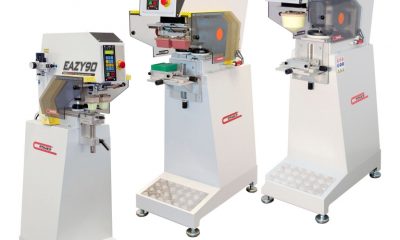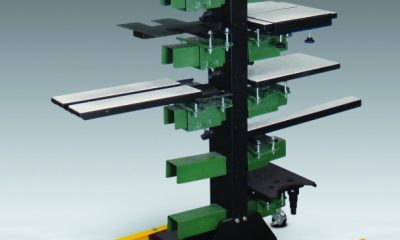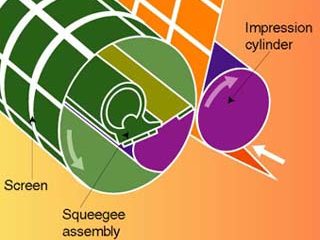Unknown to many glass decorators, the pad-printing process is ideal for printing on wide range of glass products. Part of the problem is decorators are unaware that fireable inks are available for pad-printing. The fact is, there are two varieties of lehr-fired inks suitable for pad-printing.
Unknown to many glass decorators, the pad-printing process is ideal for printing on wide range of glass products. Part of the problem is decorators are unaware that fireable inks are available for pad-printing. The fact is, there are two varieties of lehr-fired inks suitable for pad-printing.
The first system is a solvent-based ink that contains glass frit and ceramic pigment. Although this ink system works fairly well, it has its limitations, particularly with regard to ease of use. The second, more effective option is thermoplastic inks, which have wax-like characteristics at ambient temperatures. When raised to 176°F (80°C), however, they flow like a conventional liquid ink.
To use these inks, you can fit the plate holders on certain pad-printing presses with special heaters. The heaters keep the thermoplastic ink fluid so that it performs like a conventional pad printing ink. Instead of solvents providing the mechanism for transfer by evaporating and making the ink tacky enough to stick to the substrate, the cooling of the ink when it comes into contact with the glass bottle or container causes it to transfer.
Before you decide to use thermoplastic inks, however, find out from your pad-press supplier if your press can be customized with heaters. Also note that because of the pigment size in certain thermoplastic formulations, you need to increase the etching depth in your cliche to approximately 40 microns.

 Art, Ad, or Alchemy1 month ago
Art, Ad, or Alchemy1 month ago
 Case Studies1 month ago
Case Studies1 month ago
 Andy MacDougall1 month ago
Andy MacDougall1 month ago
 Columns2 weeks ago
Columns2 weeks ago
 Editor's Note2 weeks ago
Editor's Note2 weeks ago
 Marshall Atkinson2 weeks ago
Marshall Atkinson2 weeks ago
 Thomas Trimingham2 months ago
Thomas Trimingham2 months ago
 News & Trends1 month ago
News & Trends1 month ago







